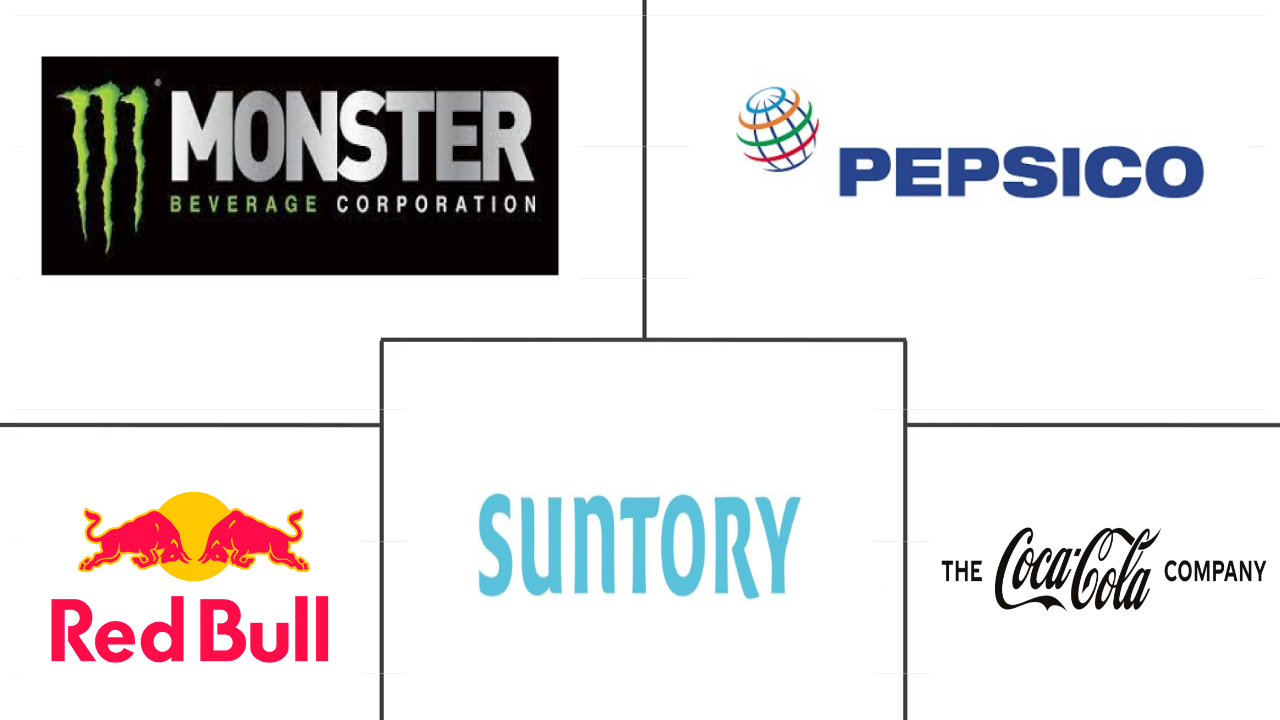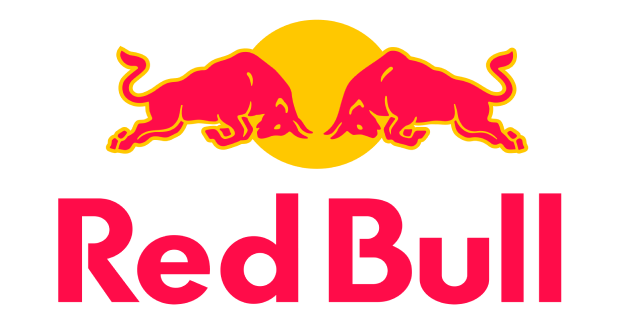Market Size of africa energy drinks Industry
|
|
Study Period | 2018 - 2030 |
|
|
Market Size (2024) | USD 3.34 Billion |
|
|
Market Size (2030) | USD 5.93 Billion |
|
|
Largest Share by Soft Drink Type | Traditional Energy Drinks |
|
|
CAGR (2024 - 2030) | 10.06 % |
|
|
Largest Share by Country | South Africa |
Major Players |
||

|
||
|
*Disclaimer: Major Players sorted in no particular order |
Africa Energy Drinks Market Analysis
The Africa Energy Drinks Market size is estimated at 3.34 billion USD in 2024, and is expected to reach 5.93 billion USD by 2030, growing at a CAGR of 10.06% during the forecast period (2024-2030).
3.34 Billion
Market Size in 2024 (USD)
5.93 Billion
Market Size in 2030 (USD)
7.63 %
CAGR (2018-2023)
10.06 %
CAGR (2024-2030)
Largest Segment by Soft Drink Type
48.05 %
value share, Traditional Energy Drinks, 2023
Positive effects of energy drinks to improve cognitive performance during vigorous workouts and sport activities influences the consumer preferences in the region
Fastest-growing segment by Soft Drink Type
12.17 %
Projected CAGR, Natural/Organic Energy Drinks, 2024-2030
Increasing preference for organic diets to support the healthy lifestyles especially among vegan consumers is estimated to promote the demand for natural/organic energy drinks
Leading Market Player
14.46 %
market share, Red Bull GmbH, 2022

Red Bull GmbH dominates the market due to its strong geographical footprint across the region through new and existing partnerships with different retail cannels
Largest Segment by Country
40.13 %
value share, South Africa, 2023
The increasing adoption of fitness training programs and gym memberships in response to the rising concerns of obesity and overweight is driving the market growth
Fastest-growing segment by Country
14.14 %
Projected CAGR, Nigeria, 2024-2030
Key government intitiatives to promote the active sports participation and national sports events is estimated to drive the market growth during the forecast period
The rising youth population engaged in active and busy lifestyles is positively influencing energy drink purchase decisions
- From 2019 to 2023, Africa witnessed a surge in the popularity of energy drinks, with both their sales value and volume registering CAGRs of 11.43% and 11.23%, respectively. This uptick in demand can be attributed to factors like a burgeoning young population, urbanization, and rapid lifestyle changes. Global giants like Red Bull and Monster, alongside regional players like Nigerian Breweries PLC, are expanding their footprint in Africa.
- Over the study period, traditional energy drinks dominated the market, accounting for over 50% of the market's value in 2023. This dominance is fueled by the increasing availability of energy drinks in diverse flavors and ingredient combinations. Nigeria stands out as the largest consumer of traditional energy drinks, capturing a 56.15% volume share in 2023. This trend is bolstered by Nigeria's youthful demographic, with a median age of 19.4 in 2022, indicative of a vibrant and fast-paced lifestyle.
- The African market is witnessing a notable surge in demand for natural and organic energy drinks, projecting robust CAGRs of 14.23% and 14.03%, respectively, during 2024-2030. This uptick is driven by a rising preference for clean-label products and a heightened awareness of healthy food and beverage choices. A 2020 survey highlighted that over 20% of the urban populations in Egypt, Kenya, and South Africa favored organic food, underscoring the growing demand for organic beverages across Africa.
Growing awareness regarding energy-boosting products likely to boost the segment’s sales
- The African energy drinks market witnessed robust growth, with sales surging by 23.13% in value from 2021 to 2023. This surge can be attributed to the rising urbanization and the fast-paced lifestyles of consumers. Energy drinks, known for their fatigue-fighting and alertness-enhancing properties, are gaining traction among consumers. The urban population in Africa has been on a steady rise, reaching 652 million in 2023, and is projected to climb further to 722 million by 2026.
- Urbanization in Africa has brought about a shift in consumer health patterns. With limited physical activity and an increased risk of diseases like obesity and cardiovascular ailments, the demand for energy-boosting alternatives, such as energy drinks, is on the rise. In 2022, half of South Africa's adult population was either overweight (23%) or obese (27%). The World Obesity Federation predicts a further 10% rise in adult obesity, reaching 37% by 2030.
- Nigeria is poised to lead the African energy drink market, with a projected volume CAGR of 13.87% during the period from 2024 to 2030. The Nigerian market boasts a range of energy drink brands, including Red Bull, Power Horse, and Power Fist, which are actively introducing new flavors like cranberry, watermelon, orange, and blueberry. The expanding fitness services landscape in Nigeria is also driving the demand for health and wellness products, including energy drinks. With a surge in fitness activities and improved fitness center infrastructure, Nigeria is expected to witness a notable uptick in energy drink sales.
Africa Energy Drinks Industry Segmentation
Energy Shots, Natural/Organic Energy Drinks, Sugar-free or Low-calories Energy Drinks, Traditional Energy Drinks are covered as segments by Soft Drink Type. Glass Bottles, Metal Can, PET Bottles are covered as segments by Packaging Type. Off-trade, On-trade are covered as segments by Distribution Channel. Egypt, Nigeria, South Africa are covered as segments by Country.
- From 2019 to 2023, Africa witnessed a surge in the popularity of energy drinks, with both their sales value and volume registering CAGRs of 11.43% and 11.23%, respectively. This uptick in demand can be attributed to factors like a burgeoning young population, urbanization, and rapid lifestyle changes. Global giants like Red Bull and Monster, alongside regional players like Nigerian Breweries PLC, are expanding their footprint in Africa.
- Over the study period, traditional energy drinks dominated the market, accounting for over 50% of the market's value in 2023. This dominance is fueled by the increasing availability of energy drinks in diverse flavors and ingredient combinations. Nigeria stands out as the largest consumer of traditional energy drinks, capturing a 56.15% volume share in 2023. This trend is bolstered by Nigeria's youthful demographic, with a median age of 19.4 in 2022, indicative of a vibrant and fast-paced lifestyle.
- The African market is witnessing a notable surge in demand for natural and organic energy drinks, projecting robust CAGRs of 14.23% and 14.03%, respectively, during 2024-2030. This uptick is driven by a rising preference for clean-label products and a heightened awareness of healthy food and beverage choices. A 2020 survey highlighted that over 20% of the urban populations in Egypt, Kenya, and South Africa favored organic food, underscoring the growing demand for organic beverages across Africa.
| Soft Drink Type | |
| Energy Shots | |
| Natural/Organic Energy Drinks | |
| Sugar-free or Low-calories Energy Drinks | |
| Traditional Energy Drinks | |
| Other Energy Drinks |
| Packaging Type | |
| Glass Bottles | |
| Metal Can | |
| PET Bottles |
| Distribution Channel | ||||||
| ||||||
| On-trade |
| Country | |
| Egypt | |
| Nigeria | |
| South Africa | |
| Rest of Africa |
Africa Energy Drinks Market Size Summary
The Africa energy drinks market is experiencing significant growth, driven by factors such as a youthful population, urbanization, and changing lifestyles. The market is characterized by a strong presence of both global brands like Red Bull and Monster, and regional players such as Nigerian Breweries PLC. Traditional energy drinks currently dominate the market, largely due to their availability in various flavors and ingredient combinations. Nigeria emerges as the largest consumer, supported by its young demographic and vibrant lifestyle. Additionally, there is a growing demand for natural and organic energy drinks, reflecting a shift towards clean-label products and increased health consciousness among consumers in countries like Egypt, Kenya, and South Africa.
The market's expansion is further fueled by urbanization, which has altered consumer health patterns and increased the demand for energy-boosting alternatives. The rise in urban populations and the prevalence of lifestyle-related health issues, such as obesity and cardiovascular diseases, have contributed to the popularity of energy drinks. Nigeria is expected to lead the market growth, with a diverse range of brands and flavors catering to the expanding fitness services sector. The market is fragmented, with major players holding a significant share, and recent product innovations, such as new flavors and collaborations, are enhancing market dynamics. The demand for low-calorie and sugar-free options is also on the rise, reflecting growing awareness of the health risks associated with high sugar intake.
Africa Energy Drinks Market Size - Table of Contents
-
1. MARKET SEGMENTATION (includes market size in Value in USD and Volume, Forecasts up to 2030 and analysis of growth prospects)
-
1.1 Soft Drink Type
-
1.1.1 Energy Shots
-
1.1.2 Natural/Organic Energy Drinks
-
1.1.3 Sugar-free or Low-calories Energy Drinks
-
1.1.4 Traditional Energy Drinks
-
1.1.5 Other Energy Drinks
-
-
1.2 Packaging Type
-
1.2.1 Glass Bottles
-
1.2.2 Metal Can
-
1.2.3 PET Bottles
-
-
1.3 Distribution Channel
-
1.3.1 Off-trade
-
1.3.1.1 Convenience Stores
-
1.3.1.2 Online Retail
-
1.3.1.3 Supermarket/Hypermarket
-
1.3.1.4 Others
-
-
1.3.2 On-trade
-
-
1.4 Country
-
1.4.1 Egypt
-
1.4.2 Nigeria
-
1.4.3 South Africa
-
1.4.4 Rest of Africa
-
-
Africa Energy Drinks Market Size FAQs
How big is the Africa Energy Drinks Market?
The Africa Energy Drinks Market size is expected to reach USD 3.34 billion in 2024 and grow at a CAGR of 10.06% to reach USD 5.93 billion by 2030.
What is the current Africa Energy Drinks Market size?
In 2024, the Africa Energy Drinks Market size is expected to reach USD 3.34 billion.

